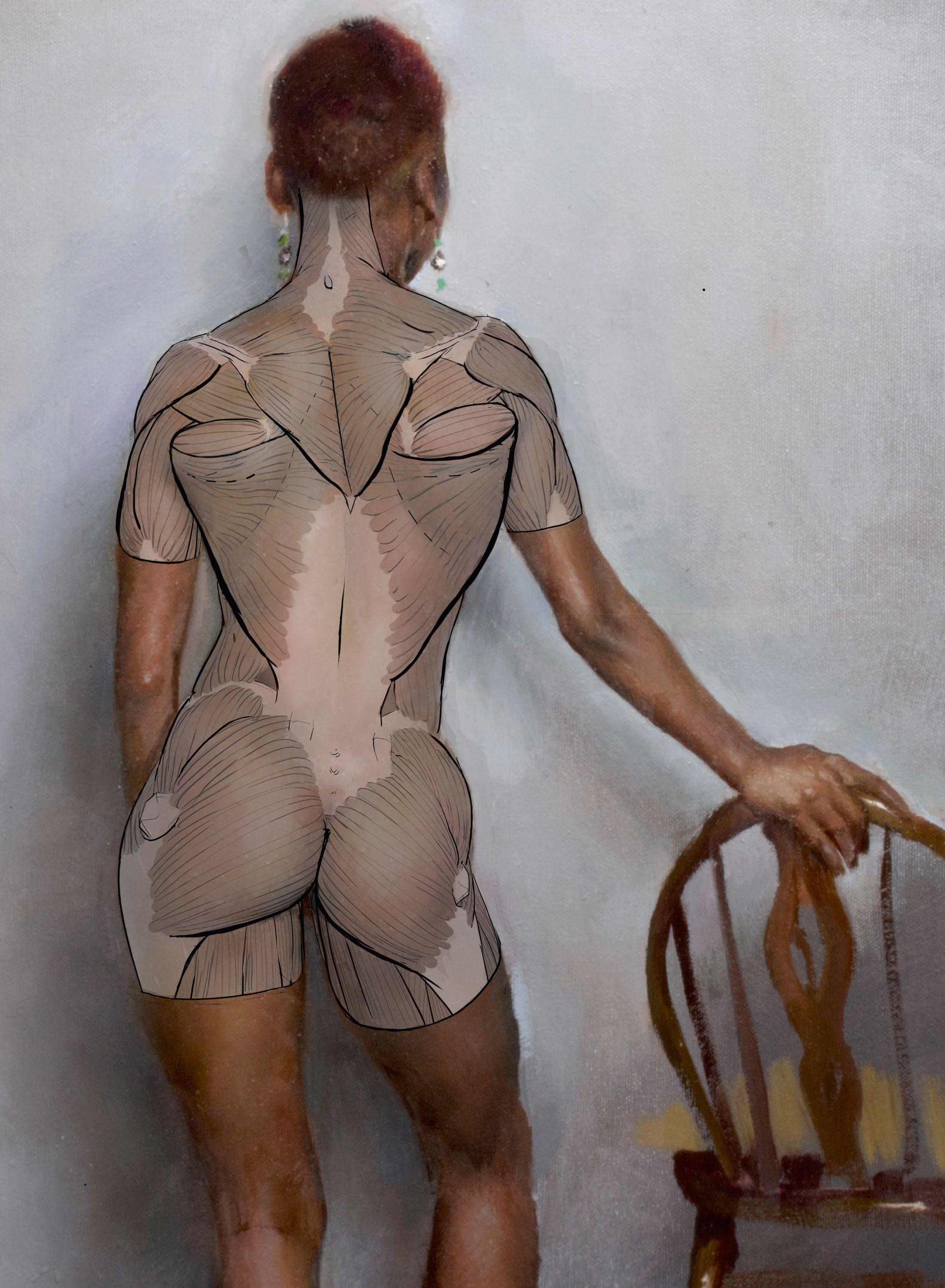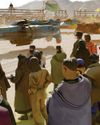Versuchen GOLD - Frei
Anatomy quick tips - HOW TO STUDY THE BACK MUSCLES
ImagineFX
|January 2023
CHARLIE PICKARD continues his ten-part series of quick tips on anatomy; this month, in the final instalment, he explores a few structural notes on the back

The back of the torso in figure drawing is often viewed as one of, if not the most difficult and complex area of the body to depict and learn. This is not without good reason; the back reveals and hides many of its structures depending on the body fat present in the model, the level of muscular development and even the position of the pose! At times, learning this structure can seem overwhelming to students.
However, if we take a structured approach to learning the many forms that create the back and break down the problem into easy-to-grasp, learnable chunks, we can approach it with confidence.
The first thing that will help us in this endeavour is to understand the reason for this complexity. As with all areas of the human form, the shapes of the back are created by its function. The more complex the function, the more complex the muscles required.
The main functions of the back are twofold. Firstly, it holds us upright. This is one of the special features of the human animal and it requires large, strong muscles.
The second function (and the reason for the complexity), is to allow as much movement of the arm as possible. To allow for this function, we have a free moving scapula. Meaning, unlike other joints in the human body, the scapula doesn't move within a static joint. It shifts across the ribcage, which is actually the reason for most of the movement of the arm. Try to move your arm without moving this bone and you will immediately understand its necessity. The various movements of this bone across the ribcage accounts for much of the back's complexity. The back is truly a marvel of organic engineering and the following are a few notes on the study of this beautiful form.

1 Boney landmarks
Diese Geschichte stammt aus der January 2023-Ausgabe von ImagineFX.
Abonnieren Sie Magzter GOLD, um auf Tausende kuratierter Premium-Geschichten und über 9.000 Zeitschriften und Zeitungen zuzugreifen.
Sie sind bereits Abonnent? Anmelden
WEITERE GESCHICHTEN VON ImagineFX

ImagineFX
Mari Yamazuki
As an illustrator, Mari's work blends the new and the traditional.
1 min
January 2026

ImagineFX
Roumen Filipov
Roumen is a 3D artist who works across archviz, animation and games.
1 min
January 2026

ImagineFX
Lenovo ThinkPad X9 Aura Edition
SLIMLINE TONIC Ultrathin and ultralight, the Lenovo ThinkPad X9 Aura Edition is a masterclass of a Windows laptop that puts office productivity front and centre
1 mins
January 2026

ImagineFX
Xavier Ortiz
Xavier is a traditional watercolour artist based in Sacramento, California.
1 min
January 2026

ImagineFX
ART IMITATES BRAZILIAN LIFE
Filipe Pagliuso's anthropomorphic rats have enough visual details to match their backstories
1 min
January 2026

ImagineFX
Aleksa Stajsic
Aleksa started out as an architecture student and a barber before moving into illustration. He's inspired by the video game cover artwork that he loved as a kid, as well as art history and modern works.
1 min
January 2026

ImagineFX
DESIGNING A FANTASY TAVERN
Grady Frederick demonstrates a typical process for concepting environments and architecture in the video games industry
4 mins
January 2026

ImagineFX
CRAFT A SENSE OF PRESENCE WITH CONTRAST
Kiuyan Ran illustrates a stylish-looking Lady Justice that conveys the god's inner strength
1 min
January 2026

ImagineFX
SHORTCUT TO SUCCESS
Luis Carrasco reveals how he uses 2D and 3D tools to place the viewer trackside at a futuristic contest
1 mins
January 2026

ImagineFX
LIGHTING IN 3D APPLICATIONS
Don't be daunted by how to handle key, fill and rim lighting in 3D. It's just like lighting a scene in real life, only better! Mike Griggs explains the three-point setup
2 mins
January 2026
Translate
Change font size

